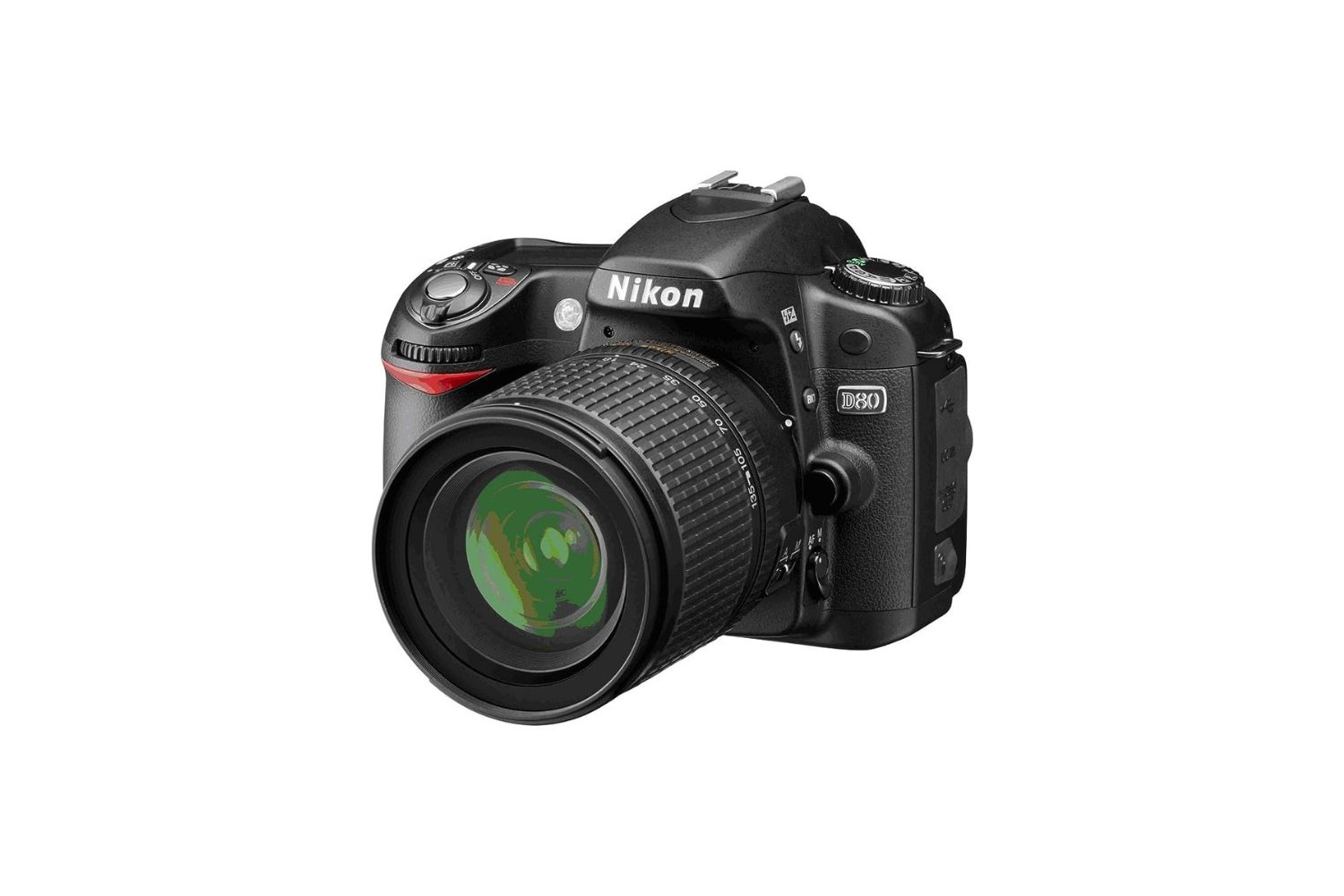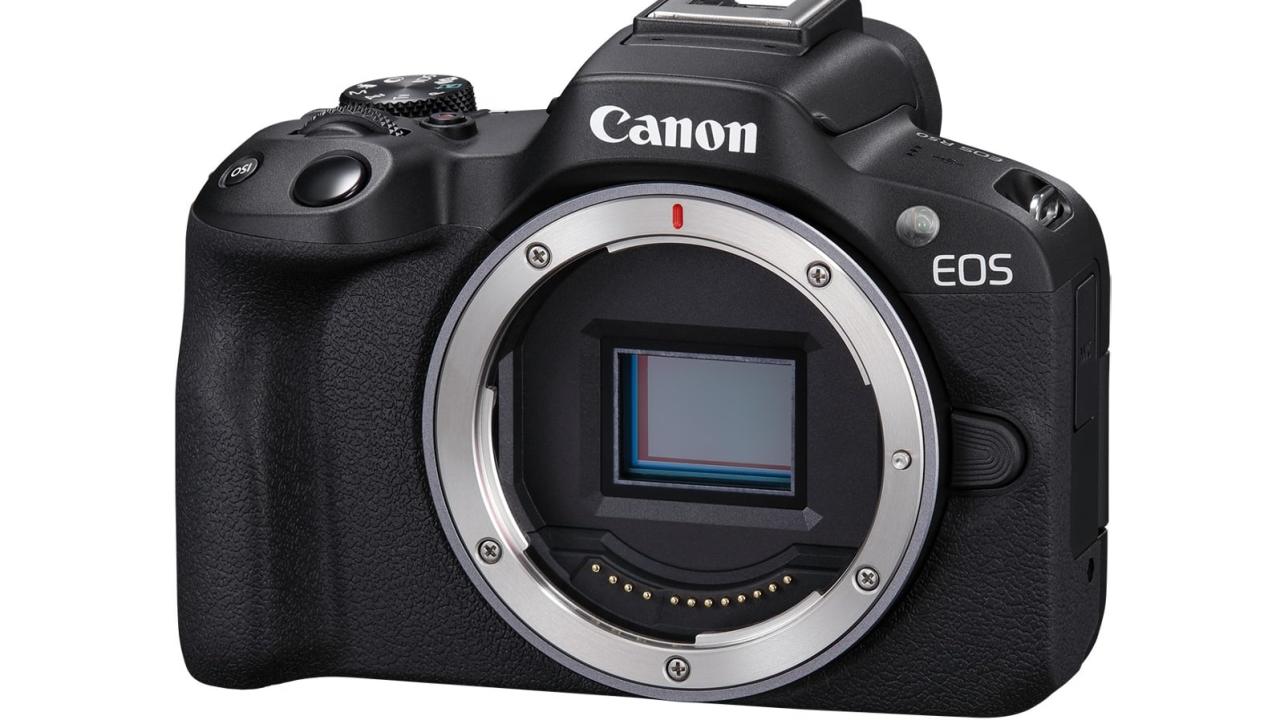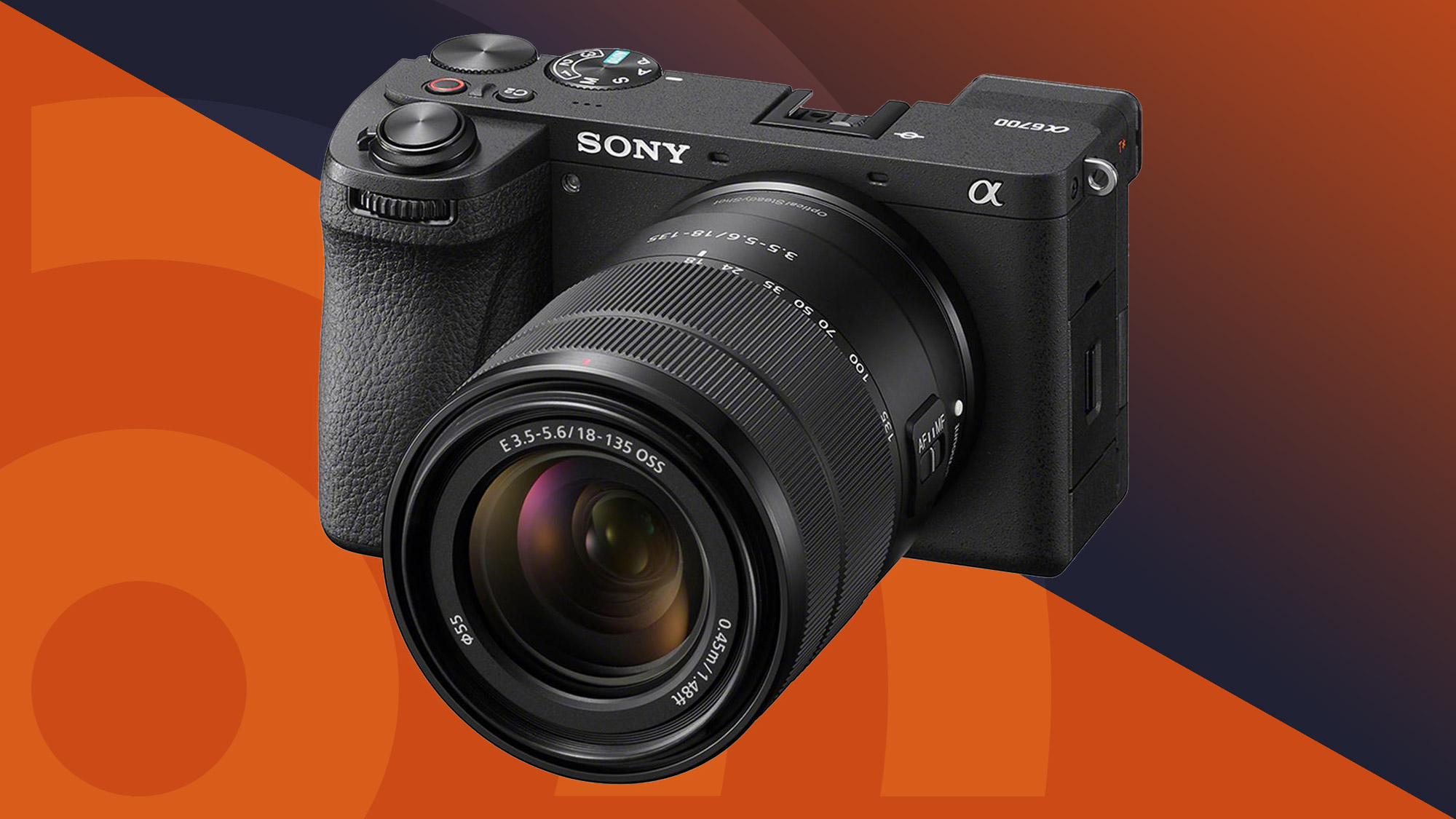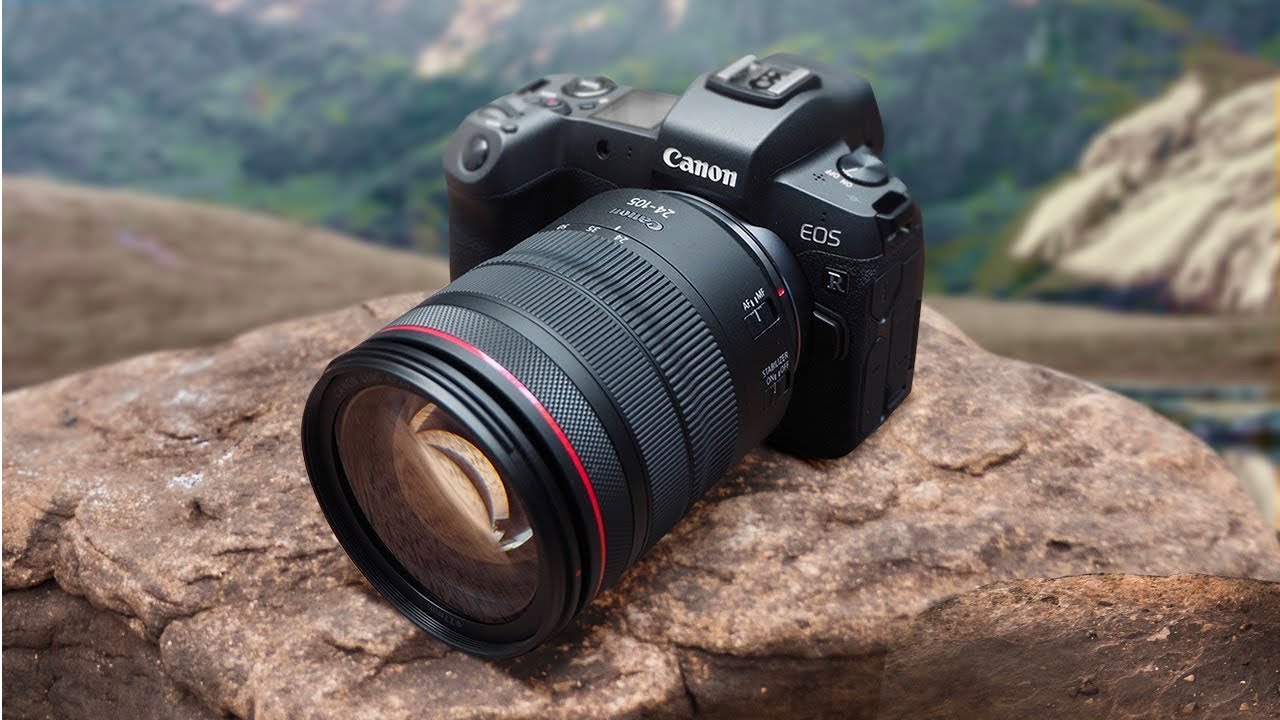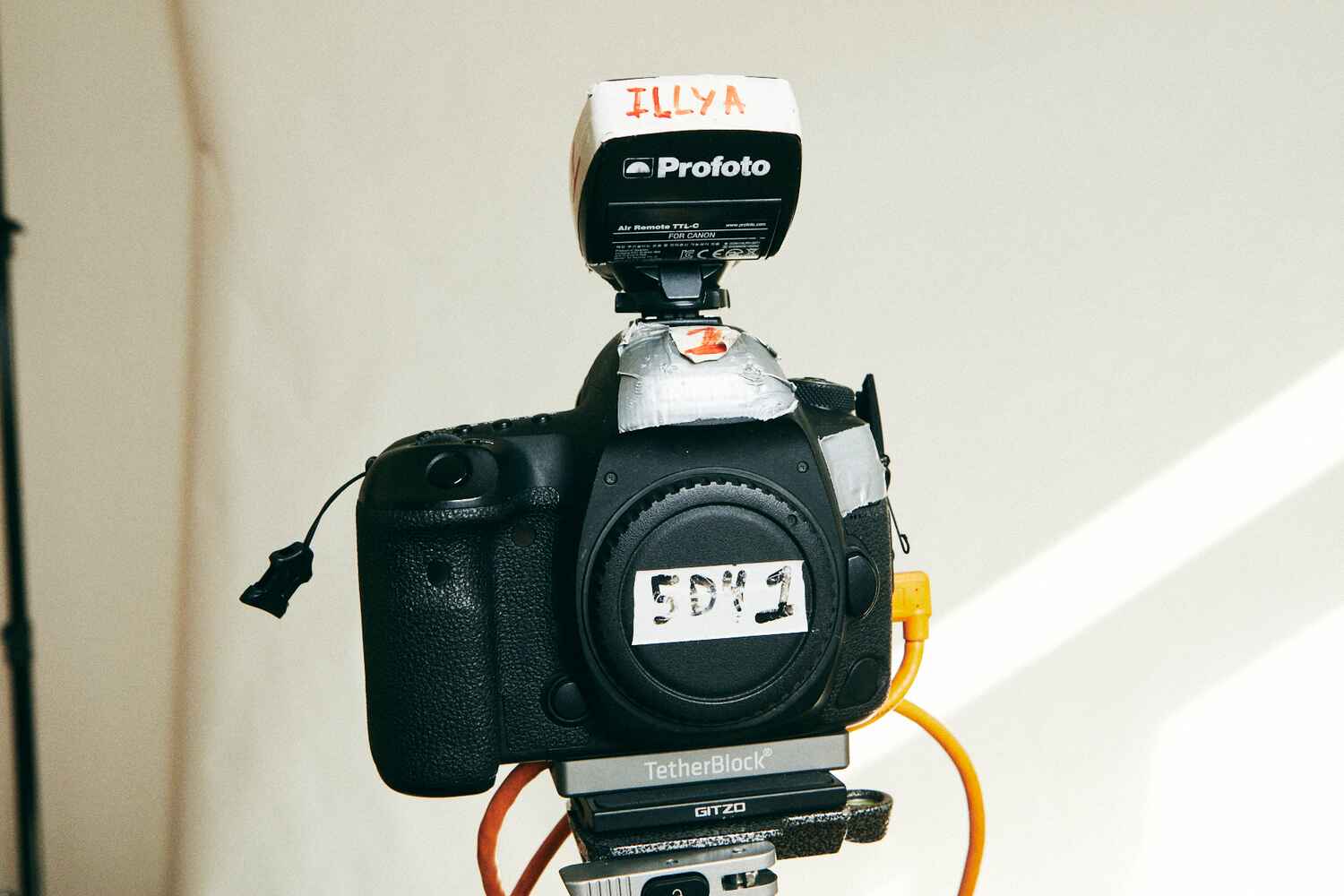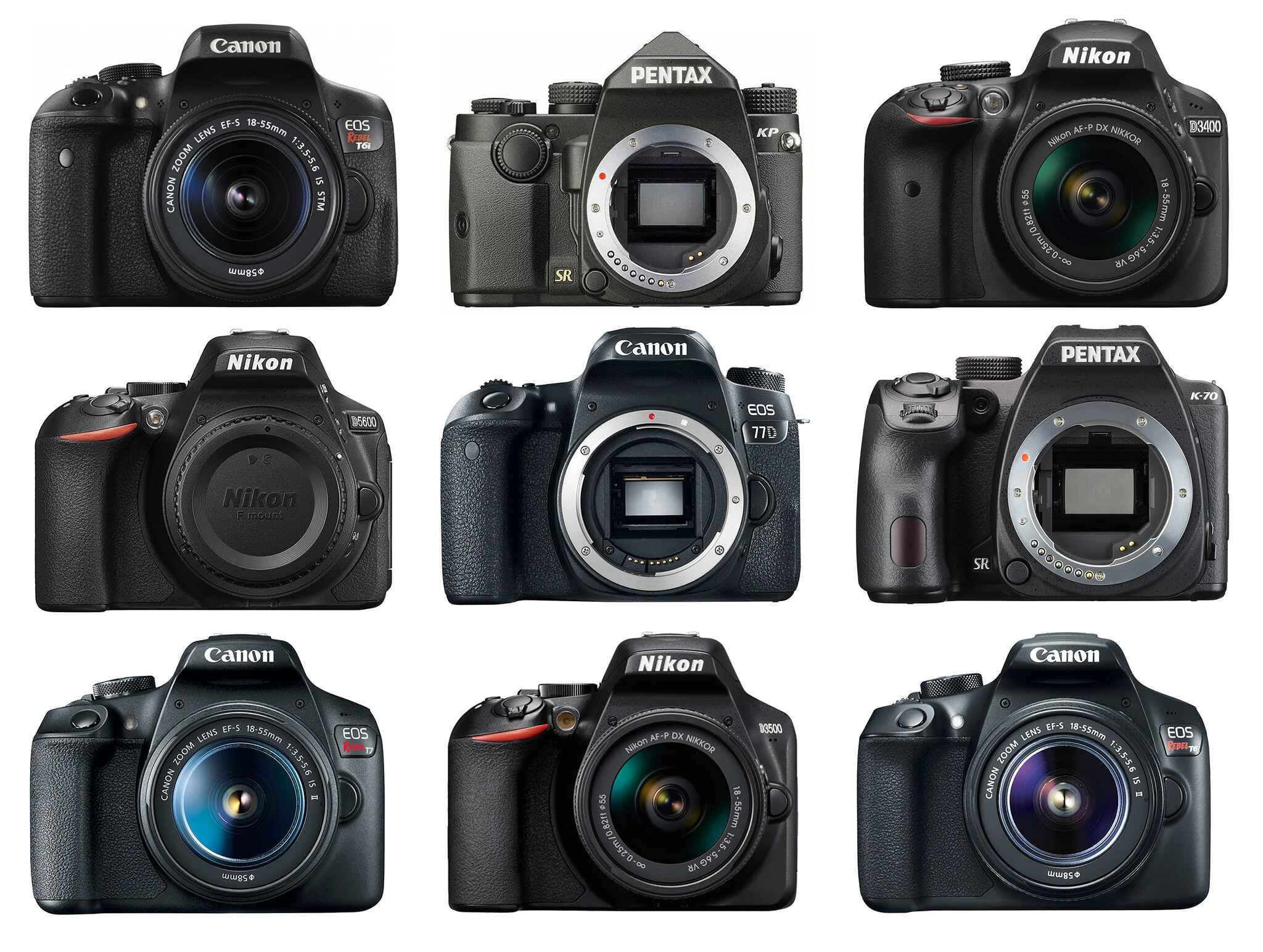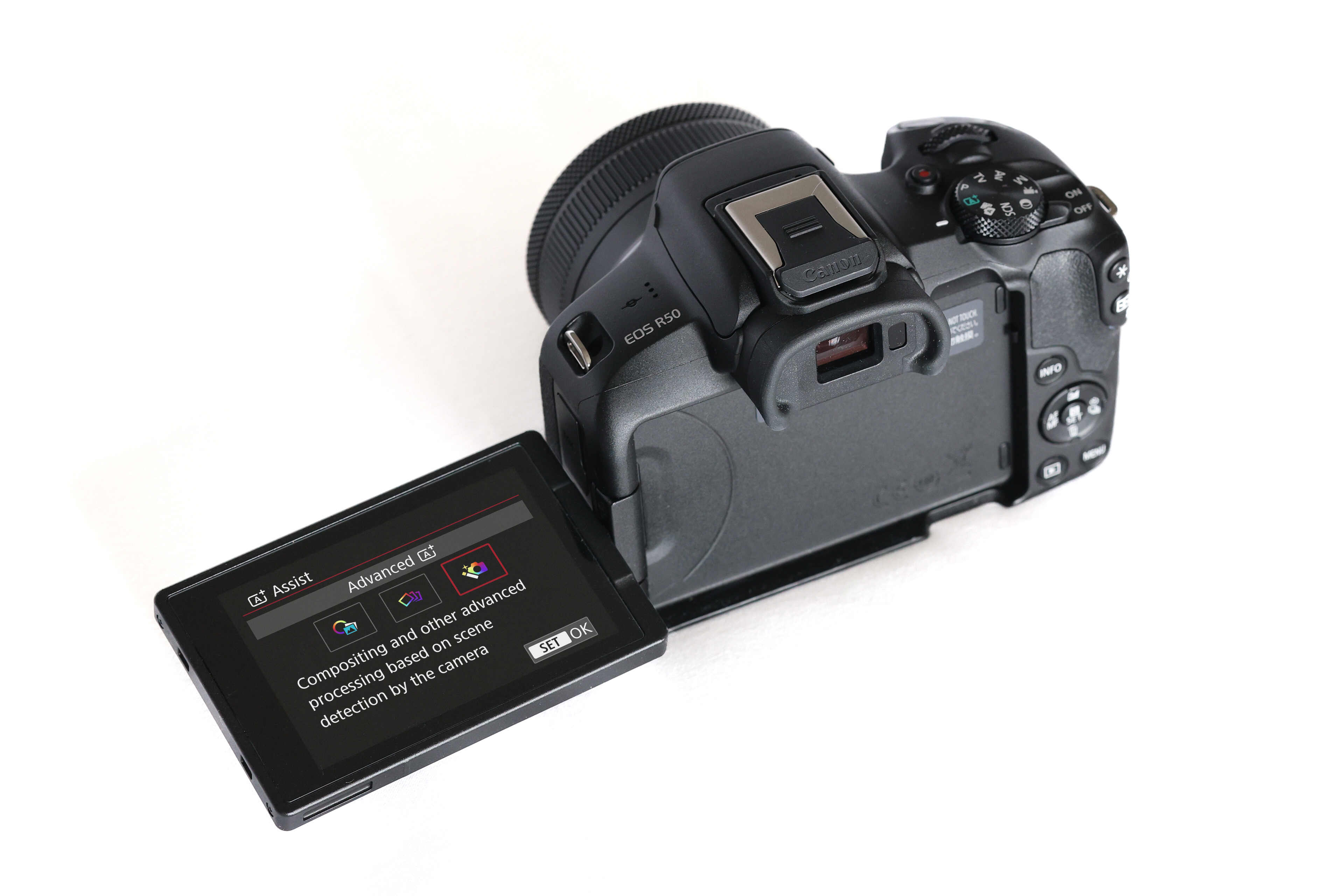Introduction
When it comes to online meetings, streaming, or content creation, the quality of your webcam can make a significant difference. While most built-in laptop cameras or external webcams can get the job done, if you want to take your video quality to the next level, using a digital SLR (single-lens reflex) camera as a webcam is an excellent option.
Digital SLR cameras are known for their superior image quality, advanced features, and versatility. By utilizing your DSLR camera as a webcam, you can take advantage of its high-resolution sensor, interchangeable lenses, and professional-level controls to capture stunning video footage with crisp details, vibrant colors, and shallow depth of field.
In this guide, we will walk you through the steps to use your digital SLR camera as a webcam, turning it into a powerful tool for your online communication and content creation needs. Whether you’re a business professional attending virtual meetings, a streamer or content creator looking to up your production quality, or simply someone who wants to enhance their video calling experience, this guide will help you make the most out of your DSLR camera.
Before we dive into the steps, it’s important to note that not all DSLR cameras can be used as webcams directly. However, with the help of some software and accessories, you can overcome this limitation and harness the full potential of your camera. So let’s get started and unlock the true capabilities of your digital SLR camera!
Why use a digital SLR camera as a webcam?
Using a digital SLR camera as a webcam offers several advantages over traditional webcams or built-in laptop cameras. Let’s explore why you should consider using a DSLR camera for your online meetings, streaming, or content creation:
1. Superior Image Quality: DSLR cameras are renowned for their exceptional image quality. With larger sensors, higher resolution, and advanced noise reduction capabilities, you can capture video footage with more clarity, sharpness, and detail compared to standard webcams. This enhanced image quality can elevate your online presence and make a lasting impression on your audience.
2. Interchangeable Lenses: One of the biggest advantages of DSLR cameras is the ability to use different lenses. Whether you need a wide-angle lens to capture a broader view, a telephoto lens for crisp close-ups, or a prime lens for stunning shallow depth of field, the versatility of interchangeable lenses allows you to create unique and visually engaging content.
3. Professional-Level Controls: DSLR cameras offer extensive manual controls, allowing you to fine-tune settings like aperture, shutter speed, ISO, and white balance. This level of control gives you the flexibility to adjust camera settings according to your specific needs and create a more professional-looking video.
4. Depth of Field: DSLR cameras are capable of producing a shallow depth of field, where the subject is in sharp focus while the background is beautifully blurred. This effect adds a cinematic touch to your videos, making your content stand out and creating a more immersive viewing experience.
5. Low-Light Performance: DSLR cameras excel in low-light conditions, thanks to their larger sensors and greater ISO range. This means you can achieve well-exposed and noise-free video even in challenging lighting situations, ensuring that you always look your best, whether it’s in a dimly lit room or during evening streams.
By harnessing the power of a DSLR camera as a webcam, you can significantly improve the quality of your online presence, whether it’s for professional purposes or personal enjoyment. From delivering high-resolution video to creating a visually appealing background blur, using a DSLR camera as a webcam opens up a wide range of creative possibilities that can enhance your online communication and content creation endeavors.
What you’ll need
Before you can start using your DSLR camera as a webcam, there are a few essential things you’ll need to ensure a smooth setup and operation. Here’s a list of items you’ll need:
1. DSLR Camera: Of course, you’ll need a digital SLR camera to get started. Make sure your camera is compatible and can be used as a webcam. While some newer models have built-in webcam functionality, older models might require additional software or hardware.
2. USB Cable or Capture Card: To connect your DSLR camera to your computer, you’ll need either a USB cable or a capture card. Most cameras come with a USB cable that can be used for data transfer. However, if your camera doesn’t support live video streaming through USB, you’ll need an HDMI capture card to convert the camera’s HDMI output into a video source that your computer can recognize.
3. Tripod or Mounting Solution: A stable camera setup is crucial for a professional-looking video. Consider using a tripod or a mounting solution to securely position and hold your DSLR camera. This will help eliminate camera shake and keep your video steady during online meetings or streaming sessions.
4. Power Adapter: Using your DSLR camera as a webcam can consume a significant amount of battery power. To ensure uninterrupted operation, it’s advisable to connect your camera to a power source using a power adapter. This way, you won’t have to worry about the battery draining in the middle of an important video call or live stream.
5. Lighting Equipment: Good lighting is essential to enhance the quality of your video. Consider investing in basic lighting equipment, such as softboxes, ring lights, or LED panels, to ensure that you’re well-illuminated and free from shadows or harsh lighting conditions.
6. Software or Apps: Depending on your camera model, you might need to download and install specific software or apps to enable webcam functionality. These software solutions can allow your computer to recognize your DSLR camera as a webcam and ensure compatibility with video calling or streaming platforms.
By gathering these essential items, you’ll have everything you need to set up and use your DSLR camera as a professional-grade webcam. Take the time to ensure you have all the necessary components to achieve the best results and make the most out of your DSLR camera’s capabilities.
Step 1: Check camera compatibility
The first step in using your DSLR camera as a webcam is to determine if your camera is compatible and can support webcam functionality. Here’s how you can check camera compatibility:
1. Manufacturer’s Website: Visit the official website of your camera manufacturer and look for information regarding webcam functionality. Many camera manufacturers provide software or firmware updates that enable webcam capabilities for their cameras. Check if your camera model is listed and if there are any specific instructions or requirements for using it as a webcam.
2. Camera Manual: Refer to the camera’s manual or user guide for any information about using it as a webcam. Some camera manuals provide step-by-step instructions on how to connect the camera to your computer and utilize it for video conferencing or streaming purposes.
3. Online Resources: Search online forums, user communities, or camera review websites for insights and experiences from other users who have successfully used your camera model as a webcam. You might find valuable tips, workarounds, or recommended software that can help you use your DSLR camera effectively as a webcam.
4. Compatibility Checkers: Some software or utility tools can scan your computer system and detect if your camera is compatible with webcam functionality. Look for camera compatibility checkers or software tools specifically designed for your camera brand and model.
Keep in mind that not all DSLR cameras can be used as webcams directly. Some older models might require additional software or hardware solutions to function as a webcam. If you find that your camera is not directly compatible, check for the availability of third-party software or capture cards that can bridge the gap between your camera and computer.
It’s important to ensure that your camera is compatible before proceeding, as attempting to use an incompatible camera as a webcam can result in technical difficulties or unstable performance during video calls or streaming sessions. By verifying camera compatibility, you can save time and effort in setting up your DSLR camera as a webcam and ensure a seamless experience throughout your online communication or content creation journey.
Step 2: Download necessary software
Once you have confirmed that your DSLR camera is compatible with webcam functionality, the next step is to download and install the necessary software to utilize your camera as a webcam. Here’s what you need to do:
1. Manufacturer’s Software: Check if your camera manufacturer provides specific software or firmware updates that enable webcam functionality. Visit the manufacturer’s website and search for the software downloads section. Look for any webcam-related software or drivers available for your camera model. Download the appropriate software and follow the installation instructions provided.
2. Third-Party Software: If your camera manufacturer doesn’t offer webcam software, or if you prefer to explore other options, there are third-party software solutions available that can enable webcam functionality for your DSLR camera. Some popular choices are OBS Studio, ManyCam, or SparkoCam. These software applications allow you to connect your camera to your computer and transform it into a webcam. Visit the respective software websites, download the software compatible with your operating system, and follow the installation instructions.
3. Firmware Updates: In some cases, updating your camera’s firmware might be necessary to fully enable webcam functionality. Check the manufacturer’s website or the software you downloaded for any available firmware updates for your camera model. Follow the instructions provided to update your camera’s firmware.
4. Webcam Settings: Once you have installed the necessary software, open the application and navigate to the settings or preferences section. Here, you can configure the webcam settings specific to your DSLR camera. Adjust options like resolution, frame rate, autofocus, and exposure to optimize the video quality according to your preferences.
It’s important to note that different software applications may have different interfaces and settings. Take some time to explore the software you choose and familiarize yourself with its functionality. Additionally, ensure that you keep the software up to date by regularly checking for software updates from the manufacturer or developer.
By downloading and installing the required software, you’ll have the essential tools to connect your DSLR camera to your computer and utilize it as a high-quality webcam. Whether you choose the manufacturer’s software or opt for third-party solutions, following this step will ensure that your camera is ready to be used for video calls, streaming sessions, or content creation with superior image quality and advanced control options.
Step 3: Connect your camera to your computer
Now that you have the necessary software installed, it’s time to connect your DSLR camera to your computer. Follow these steps to establish a connection:
1. USB Connection: If your camera supports direct USB connectivity for webcam functionality, connect one end of the USB cable to your camera and the other end to an available USB port on your computer. Ensure that the cable is securely plugged in on both ends.
2. HDMI Connection (with Capture Card): If your camera requires an HDMI connection and you’re using a capture card, connect one end of the HDMI cable to the camera’s HDMI output and the other end to the capture card’s HDMI input. Then, connect the capture card to your computer using a USB cable or the interface specified by the manufacturer.
3. Power On your Camera: Turn on your camera and set it to the appropriate mode for webcam use. Typically, this is the “Live View” or video mode. Refer to your camera’s manual for specific instructions on setting the camera to the correct mode.
4. Launch the Software: Open the software you downloaded in Step 2. Depending on the software you chose, you may need to select your camera as the video source or configure the settings within the software to recognize your camera as a webcam.
5. Camera Settings: Within the software, you may have options to adjust camera settings such as resolution, frame rate, or autofocus. Take some time to configure these settings based on your preferences or the requirements of your video conferencing or streaming platform.
6. Test the Connection: Once you have connected the camera and set up the software, it’s crucial to test the connection. Open your preferred video conferencing or streaming platform and check if your camera is recognized as a webcam. Start a video call or streaming session to verify that the video is being captured from your DSLR camera.
If everything is working correctly, you should now be able to use your DSLR camera as a high-quality webcam for your online meetings, streaming sessions, or content creation. If you encounter any issues, double-check the connections, settings within the software, or consult the manufacturer’s support resources or online forums for troubleshooting guidance.
Remember to disconnect the camera from the computer and power off the camera after use to preserve battery life and ensure the longevity of your equipment.
By successfully connecting your DSLR camera to your computer, you’ve taken a significant step towards utilizing its superior image quality and advanced features for professional-grade video communication and content creation.
Step 4: Set up your camera settings
Once you have connected your DSLR camera to your computer and established a connection, it’s time to set up your camera settings to ensure optimal video quality. Follow these steps to optimize your camera settings:
1. Exposure Settings: Adjust the exposure settings on your camera to achieve a well-balanced and properly lit video. You can set the ISO to control the camera’s sensitivity to light, the aperture to control the depth of field, and the shutter speed to control the exposure time. Experiment with these settings to find the right balance for your environment and desired video quality.
2. Focus Settings: Ensure that your camera is properly focused on you or the subject you want to capture. You can choose between manual focus or autofocus, depending on your preference and the stability of your camera setup. If using autofocus, make sure it is set to continuous autofocus to track any movements accurately.
3. White Balance: Adjust the white balance settings on your camera to ensure accurate color reproduction. This will help avoid any unwanted color casts in your video. Use the camera’s automatic white balance setting or manually set it based on the lighting conditions in your environment.
4. Picture Style/Profile: Depending on your camera model, you may have the option to select different picture styles or profiles. These presets can enhance the look of your video by adjusting parameters such as contrast, saturation, and sharpness. Experiment with different styles to find the one that best suits your desired video aesthetic.
5. Framing and Composition: Consider the framing and composition of your video. Position your camera at a comfortable eye level and ensure that you are well-framed within the frame. Leave some space around the edges of the frame to avoid cropping important areas during video calls or live streams.
6. Camera Stability: Use a tripod or stable mounting solution to ensure that your camera remains steady throughout your video sessions. This will help minimize camera shake and deliver a smooth and professional-looking video.
Remember to periodically check your camera settings, especially if you use it for different purposes or environments. Adapt the settings based on the specific requirements, lighting conditions, or video platforms you are using.
By optimizing your camera settings, you can take full advantage of your DSLR’s capabilities and produce high-quality video with clear, well-exposed visuals. Adjusting exposure, focus, and other settings will help you create a polished and professional appearance in your video communication or content creation endeavors.
Step 5: Set up your audio
While video quality is important, don’t forget about the audio aspect of your online communication or content creation. Follow these steps to ensure that your audio is clear and of high quality:
1. Microphone Selection: Determine the microphone you want to use for capturing audio. You have a couple of options here:
– Built-in Microphone: Many DSLR cameras have built-in microphones. While these can capture audio, they often produce lower-quality sound compared to external microphones. If using the built-in microphone, make sure it is positioned close to your voice source for better audio pickup.
– External Microphone: Consider using an external microphone for improved audio quality. There are various types to choose from, including lapel microphones, shotgun microphones, or USB microphones. Select a microphone that best suits your needs and budget. Ensure that the microphone is compatible with your camera or computer.
2. Connect the Microphone: Connect the microphone to your camera or computer, depending on where you want to capture audio. If using the camera, connect the microphone to the camera’s audio input or hot shoe, if available. If using the computer, connect the microphone to the appropriate audio input port or use a USB connection, depending on the microphone type.
3. Test the Audio: Once the microphone is connected, test the audio to ensure that it is functioning properly. Check the audio levels and make any necessary adjustments. Speak into the microphone and monitor the audio input to confirm that it is clear and loud enough.
4. Adjust Microphone Settings: If using an external microphone connected to your camera, check the microphone settings within your camera’s menu system to ensure the correct input source is selected. If using an external microphone connected to your computer, access the sound settings in your operating system or the software application you are using to adjust the microphone input level and quality.
5. Monitor Audio: It’s essential to monitor your audio while recording or streaming. Use headphones or speakers to ensure that you can hear the audio output in real-time. This will help you detect any issues with the audio, such as distortion or low volume, and make adjustments accordingly.
6. Noise Reduction: Background noise can be distracting and negatively impact the audio quality. Consider using noise reduction techniques or accessories, such as foam windscreens or pop filters, to minimize unwanted noise and enhance the clarity of your voice.
By setting up your audio properly, you can ensure that your online communication or recorded content is accompanied by high-quality, clear audio. Remember to regularly check your audio setup, monitor the levels, and make adjustments as needed to achieve the best possible audio performance.
Step 6: Positioning and framing
The way you position and frame yourself in the camera’s view is crucial for presenting a professional appearance during video calls and live streams. Follow these steps to ensure that you are positioned and framed correctly:
1. Camera Placement: Position your camera at eye level or slightly above for a natural and flattering angle. Avoid placing the camera too high or too low, as it can create unflattering perspectives.
2. Distance from the Camera: Maintain an appropriate distance from the camera. Too close, and your face may appear distorted, and other features may be exaggerated. Too far, and you may appear distant and less engaging. Experiment with different distances to find a balance that captures your full face without being too close or too far.
3. Rule of Thirds: Utilize the rule of thirds when framing yourself within the camera’s view. Imagine dividing the frame into thirds both horizontally and vertically. Position your eyes near the upper third line to create a visually pleasing composition.
4. Background Selection: Consider the background when positioning yourself. Choose a clean and uncluttered background free from distractions. A plain wall, a neat bookshelf, or a tastefully arranged backdrop can provide a professional and polished look.
5. Lighting: Pay attention to lighting when positioning yourself. Position yourself facing a light source, such as a window, for even and flattering lighting. Avoid backlighting or harsh, direct light that can cast shadows on your face.
6. Posture and Body Language: Sit up straight and maintain good posture during video calls or streaming sessions. Good posture will make you appear more confident and engaged. Additionally, be mindful of your body language and facial expressions, as these non-verbal cues can convey your message effectively.
7. Test the Framing: Before starting your video call or live stream, test the framing by recording a short sample video or using the preview function in the software you are using. Check if the framing looks balanced and if you are comfortable in the camera’s view. Make any necessary adjustments to achieve the desired framing.
Remember that positioning and framing may vary depending on the purpose of your video, personal preferences, and the platform you are using. Continuously monitor and adjust your camera setup to ensure you are presenting yourself in the best possible way during online communication or content creation.
By paying attention to positioning, framing, and overall appearance, you can portray a professional image and captivate your audience with a compelling visual presence during video calls or live streams.
Step 7: Test and troubleshoot
After setting up your DSLR camera as a webcam and configuring all the necessary settings, it’s crucial to test your setup and address any potential issues. Follow these steps to test and troubleshoot your camera as a webcam:
1. Perform a Test Call: Initiate a test call using the video conferencing or streaming platform you plan to use. Test the video and audio quality in real-time. Pay attention to any lag, freezing, or audio distortion that may occur. Ensure that your camera and microphone are detected and selected as the input sources.
2. Check Internet Connection: A stable and reliable internet connection is vital for smooth video streaming and online communication. Ensure that you are connected to a strong and stable Wi-Fi network. If possible, use a wired Ethernet connection for a more stable and consistent internet connection.
3. Monitor Performance: While in the test call or streaming mode, carefully monitor the performance of your camera. Look out for any issues like overheating, frequent disconnections, or unusual noises. If you encounter such problems, consult the camera’s manual or the manufacturer’s support resources for troubleshooting guidance.
4. Audio and Video Sync: Pay attention to the synchronization between your audio and video. If you notice any delay or desync, you may need to adjust the settings within the software you are using or check for any available updates. This can help ensure that your audio and video are in perfect harmony during your online interactions.
5. Update Software: Regularly check for any software or firmware updates for both your camera and the software you are using. Updates may provide bug fixes, enhancements, or improved compatibility, ensuring a better overall experience. Stay up to date with the latest software versions to take advantage of any updates or improvements.
6. Seek Support: If you encounter persistent issues that you cannot resolve on your own, you may need to reach out to technical support. Contact the camera manufacturer’s support team, consult online forums or user communities, or seek assistance from the software developer. They can provide additional guidance and troubleshooting steps specific to your setup.
7. Practice and Experiment: Take the time to practice using your DSLR camera as a webcam. Experiment with different settings, lighting conditions, and angles. This will allow you to fine-tune your setup, understand the capabilities of your camera, and deliver the best possible video quality.
Testing and troubleshooting your camera setup will help you identify and address any technical issues before important video calls, streaming sessions, or content creation activities. By ensuring that everything is working smoothly and resolving any potential problems, you can confidently use your DSLR camera as a reliable and high-quality webcam for your online communication and content creation needs.
Conclusion
Congratulations! You have successfully learned how to use your digital SLR camera as a webcam, unlocking its full potential for online communication, streaming, and content creation. By following the steps outlined in this guide, you have transformed your camera into a powerful tool that offers superior image quality, advanced features, and professional-level control.
Using a DSLR camera as a webcam provides advantages such as enhanced image quality, the ability to use interchangeable lenses, and access to professional-level controls. By utilizing the right software and accessories, you can harness the capabilities of your camera and elevate your video presence to new heights.
Remember to check camera compatibility, download the necessary software, connect your camera to your computer properly, configure camera settings, set up your audio, position and frame yourself effectively, and test your setup for optimal performance. Regularly checking for updates and troubleshooting any issues will ensure a smooth and professional video experience.
Whether you are participating in online meetings, conducting live streams, or creating content for various platforms, using a DSLR camera as a webcam will elevate the quality of your videos, enhance your online presence, and captivate your audience. By taking advantage of the superior image quality, advanced features, and versatility of your camera, you can produce professional-grade videos that leave a lasting impression.
Now that you are equipped with the knowledge and skills to use your DSLR camera as a webcam, go ahead and experiment, practice, and refine your setup. Embrace the possibilities and unleash your creativity in your online interactions and content creation endeavors.
Remember, using a DSLR camera as a webcam is just the beginning. Continue to explore and discover new techniques, accessories, and software solutions to further enhance your video production quality. Keep up to date with the advancements in camera and software technology to stay at the forefront of the ever-evolving world of online communication and content creation.
So, go ahead and make the most of your DSLR camera as a webcam. Embrace the power of high-quality video and take your online presence to a whole new level!









